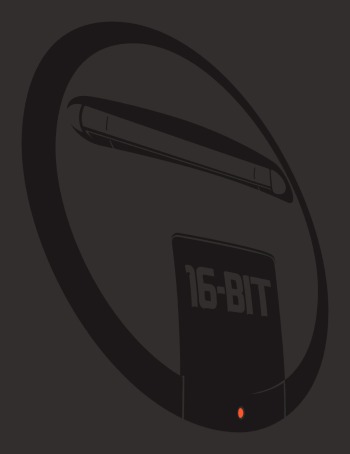
Video Game Book Reviews
The Sega Mega Drive/Genesis: Collected Works is a massive coffee table book devoted to Sega's 16-bit console. It was produced after being successfully funded on Kickstarter in 2013. (Full disclosure: the author of this review was a backer of this project, and his name appears in the book in the credits section.) This 352 page hardcover tome is divided into three sections - a history of the Genesis/Mega Drive, the artwork, and a series of interviews.
The history section, written by journalist Keith Stuart, is about fifty pages long, and is peppered with assorted images along the margins. It chronicles the beginning of the Genesis, relating all of its major events as well as detailing the releases of all of its significant games, both first and third party. It's supplemented by numerous quotes from Sega developers and executives. It's not nearly as thorough of a chronology as the one featured in Console Wars, obviously, but it's also more focused on the games themselves rather than the marketing.
The art section comprises the bulk of the book. It includes photographs of systems and accessories, schematics, sketches full cover artwork for both American and Japanese versions of several games (including a few unused ones, like a more serious take on the North American Gunstar Heroes cover), and sprite sheets and background artwork from a number of titles.
The final sections includes 28 interviews with a number of Sega game developers. The big names include Yu Suzuki and Yuji Naka, but there are tons and tons of others, including Makoto Uchida (Altered Beast, Golden Axe), Ryuichi Nishizawa (Wonder Boy), Kan Naito (Shining in the Darkness, Landstalker), Greg Johnson and Mark Voorsanger (Toejam and Earl), Noriyoshi Ohba (Revenge of Shinobi, Streets of Rage), Yuzo Koshiro (composer of so many games), and many more. It details the creation of a huge number of Sega titles, both popular and obscure, like Bonanza Bros., Crack Down, Shadow Squadron, Metal Head, Alien Storm, and Eternal Champion, as well as some details with the development of issues with Shinobi III. Each interview is about 2-3 pages each. While most Sega fans will probably already be familiar with the history section in the first part of the book, this is the section that reveals the most fascinating details.
The book gives equal coverage to both Japanese and Western artists, an important aspect given that the console was more popular overseas than in native Japan. Retro gamers have a tendency to turn their noses up at American box covers, because in many cases they have little to do with the actual in-game artwork, but taken on their own terms, there are still some excellent pieces, and it reveals important marketing distinctions between the territories. For example, the crew on the cover of Phantasy Star IV barely look like their in-game counterparts, but the art is provided by well respected fantasy artist Boris Vallejo. On that note, Makoto Uchida admits that Vallejo's artwork played a huge inspiration in Golden Axe's visual design, so it's cool that the Western branch of Sega contracted him to provide artwork for later games in the series, at least in the West. Some pieces are credited with specific names, many of which are well known illustrators in Japan. However, there are still others that are not given specific credit, as the names of their artists have been lost to time, an unfortunate issue that has affected many companies.
The book retails at 35 pounds, plus anyone outside of the United Kingdom will either need to pay extra for shipping such a heavy book, or pay a premium from a local importer. In spite of the high price, it's an absolutely essential purchase for any Sega fan, for both the artwork and the interviews.
Links:
Read Only Memory: Official Site
Browse at Amazon.com (affiliate link)
Browse at Amazon.co.uk (affiliate link)
